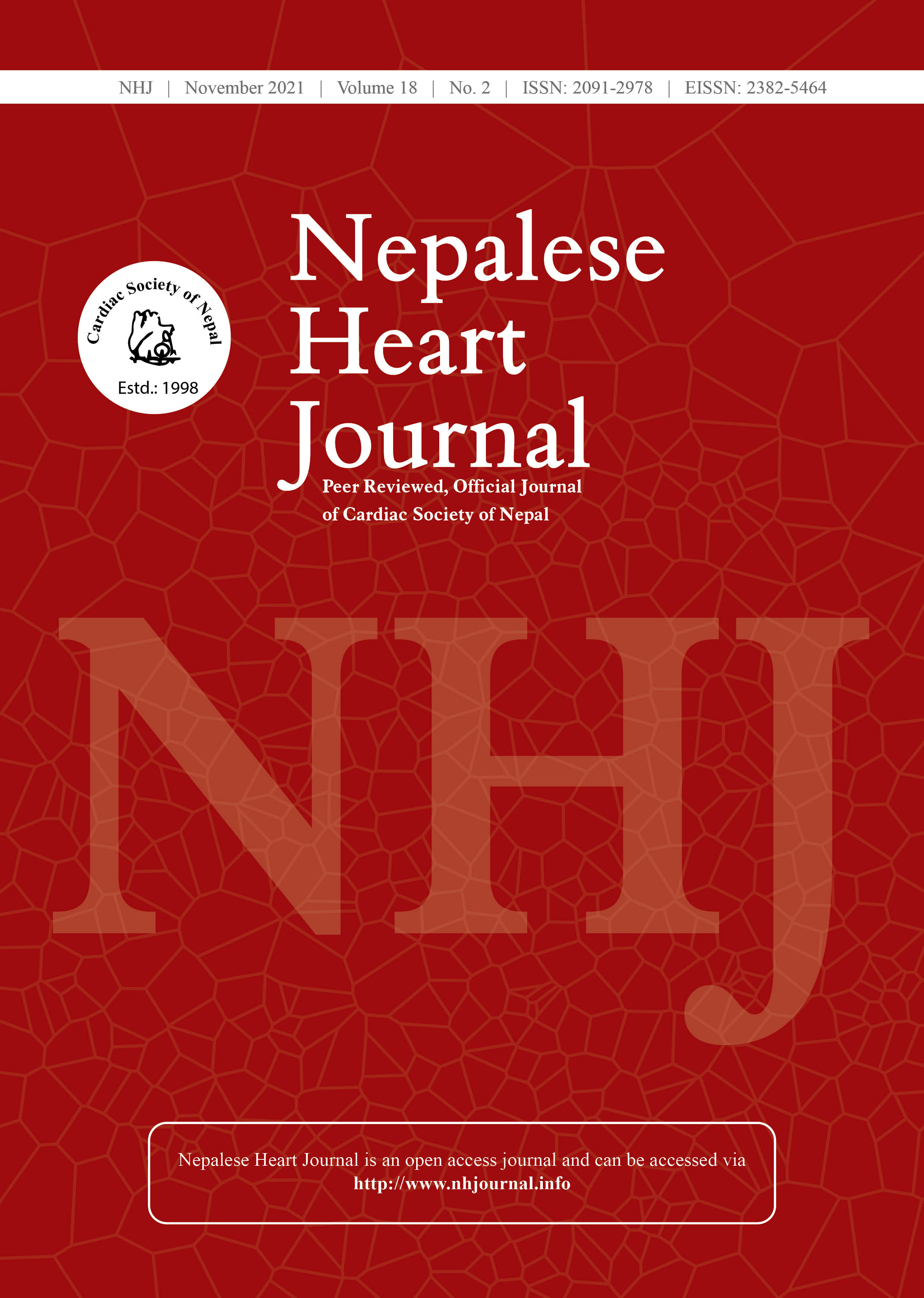Prevalence and Angiographic Characteristics of Coronary Ectasia in Adults: A Retrospective Study in a Tertiary Cardiac Centre of Nepal
DOI:
https://doi.org/10.3126/njh.v18i2.40394Keywords:
Angiography, Aneurysm, Atherosclerosis, Coronary artery disease, EctasiaAbstract
Background and Aims: Coronary artery Ectasia is a relatively uncommon problem encountered during coronary angiography with the prevalence ranging from 1.2% to 4.9%. Coronary artery Ectasia and aneurysm both denote an arterial segment the dimension of which is larger than normal arterial segment, both have diameter greater than 1.5 times of normal. The length of dilate segment is greater than its width in Ectasia while less in aneurysm. There is an overlap between risk factors of coronary artery Ectasia and atherosclerosis. The clinical relevance in general, and the appropriate medical management of coronary artery Ectasia specifically, is ill defined, as no randomised prospective studies exists. The study was conducted with an aim to estimate the prevalence of coronary artery Ectasia and aneurysm as well as to study the angiographic characteristics of coronary artery Ectasia and aneurysm undergoing in adult patients’ coronary angiography in tertiary cardiac centre of Nepal.
Methods: A retrospective study was conducted in Shahid Gangalal national heart centre, Nepal analysing the angiographic records from cardiac catheterization lab. A total of 447 patients who underwent coronary angiography and meet the inclusion criteria from July, 2019 to December, 2019 were included in the study. Any angiographic evidence of coronary Ectasia and aneurysm, coronary artery involved and it’s extent were analysed and recorded in the proforma. In addition, any associated evidence of coronary artery disease was analysed and recorded in the proforma.
Results: The findings of our study revealed the overall prevalence of coronary artery Ectasia (CAE) and Coronary artery Aneurysm as 2.6%. Coronary ectasia was most prevalent in left anterior descending (LAD) artery (83.3%), followed by RCA and left main in 66.7% and 16.7% respectively. In contrast, Coronary aneurysm was mostly seen in RCA (66.7%) followed by LCX (33.3%). In addition, the study also showed the frequency of localised Ectasia as 50 % and the association of significant coronary artery disease with coronary artery Ectasia in 66.67%.
Conclusion: CAE and aneurysm are rare phenomenon encountered in routine coronary angiography, with LAD and RCA being most commonly involved in CAE and coronary aneurysm respectively. CAE and aneurysm have significant association with the coronary artery disease.
Downloads
Downloads
Published
How to Cite
Issue
Section
License
Copyright (c) 2021 Nepalese Heart Journal

This work is licensed under a Creative Commons Attribution 4.0 International License.
This license enables reusers to distribute, remix, adapt, and build upon the material in any medium or format, so long as attribution is given to the creator. The license allows for commercial use.




